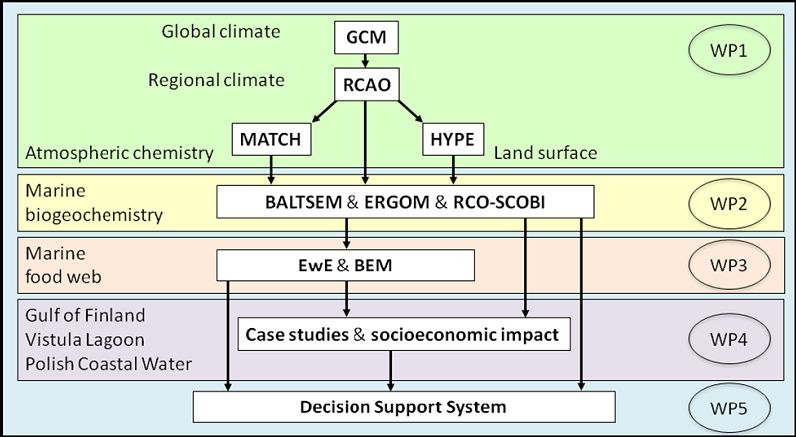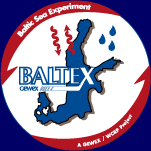Introduction
Welcome to the Decision Support System web pages of ECOSUPPORT.
Results from the multi-model ensemble simulations, which combine climate change and nutrient load scenarios, are presented on these pages.
For navigation within the ECOSUPPORT Decision Support System (DSS) pages, use the links at the navigation bar on the right.
The database assess the combined effects of changing climate and changing human activity (nutrient load reductions [runoff and airborne], coastal management, fisheries) on the Baltic Sea ecosystem. The system is based upon scenarios from an existing state-of-the-art coupled atmosphere-ice-ocean-land surface model for the Baltic Sea catchment area, marine physical-biogeochemical models of differing complexity, a food web model, statistical fish population models, economic calculations, and new data detailing climate effects on marine biota.

Identifiers and quantifiers of the impact of nutrient load reductions on the eutrophication status in future climate are the ecological quality indicators:
- winter surface nutrient concentrations
- summer average Secchi depths
- chlorophyll-a concentrations
- extension and duration of hypoxic areas
- changes of extension and duration of anoxic areas
- extension of areas covered with cyanobacteria
- cyanobacteria concentrations
- plankton biomass
- primary production
- nitrogen fixation
- denitrification, and permanent burial of phosphorus
- sediment nutrient concentrations


